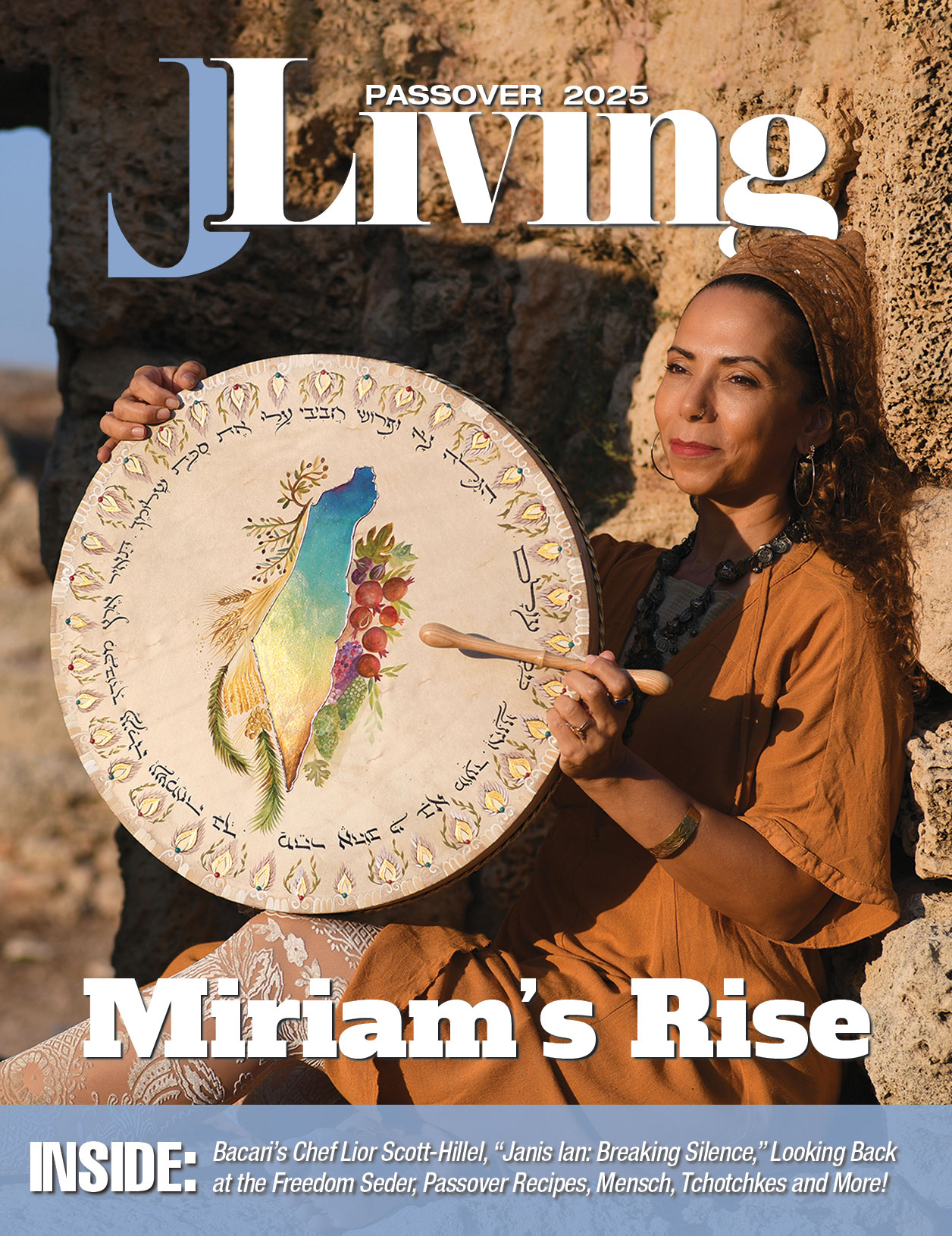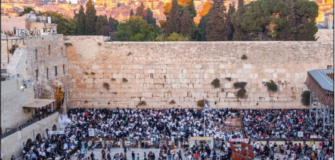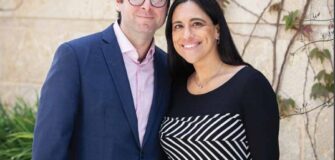Bumuelo, Zengoula and Boyos

BUMUELO
If you are from the Iberian peninsula you would call it a bumuelo, binuelo, or a bunuelo. If you were in the Ottoman Empire you would know it as lokam, or in Greek loukoumades. The Roman Greeks called it zvingous and in Arabic, it would go by awamee. Egyptians would say sfinge, Syrians would say zalabieh and you can hear Italians call it Zeppole. No matter what you want to call it, think of this fried delicacy as a Spanish relative of the jelly donut. These fried yeast doughnuts are often steeped in sugar syrup and flavored with lemon, rose or orange-blossom water.
One of the earliest references to bumuelos can be found in the twelfth century as Rabbi Rabbi Maimon ben Joseph, the father of Maimonides, wrote,” one must not make light of the custom of eating sofganim (fried fritters) on Hanukkah. It is a custom of the Kadmonim (the ancient ones).
Gil Marks, a Jewish food historian explains in his book, “Encyclopedia of Jewish Food,” finds that “Rabbi Jacob Culi of Instanbul in his Ladino biblical commentary Me’am Lo’ez (1730), in explaining the biblical description of the taste of manna as being “like dough in honey,” uses the term bilmuelos.” References to support this include the book of Numbers, describing manna as tasting like “the taste of oil cake” and in Exodus when manna is said to taste like “honey.” The bumuelo perfectly fits the description, a fried cake doused in sugary syrup or honey. So, who doesn’t want a little bit of manna this holiday?
INGREDIENTS
- 1 envelope rapid rise yeast (2 teaspoons)
- 1 cup plus 1 tablespoon warm water (100-110 degrees)
- 1 teaspoon sugar
- 1 tablespoon vegetable oil
- 1/4 teaspoon sea salt
- 2 cups unbleached flour
- Vegetable oil for deep frying, (about 2 quarts)
- Syrup
- 1 cup water
- 1 cup sugar
- ¾ cup honey
- 1 tablespoon fresh lemon juice
INSTRUCTIONS
In a small bowl, stir together the yeast and warm water and let stand in a warm place until the mixture bubbles, about 10 minutes. Whisk in oil, salt and ½ cup of flour to the mixture. Add the balance of the flour ½ cup at a time until smooth and well blended. The dough will be a little loose and sticky. Cover the bowl with plastic wrap and set aside in a warm draft free counter to rise for one hour.
Place all the syrup ingredients in a saucepan on medium heat. After the sugar has dissolved, let the liquid boil for 5 minutes. In a small pot, stir together the water, sugar, honey and lemon juice over medium heat. Bring to a boil and cook for 5 minutes, stirring frequently. Remove it from the heat.
When the dough is ready, preheat oil in a deep 8-quart saucepan pan or deep fat fryer to 360º-365º. The oil should be 3-4 inches deep. Prepare a small bowl with water for wetting your hands to help with working with the dough.
Spoon 2 tablespoons of dough, make a ball, and punch a hole in the center with your thumb. Then slide the dough off your fingers into the hot oil. Fry and flip until both sides are golden brown. Remove the bumuelo from the oil with a tongs and drain on paper towels.
Dip the bumuelos into the hot syrup and serve.

ZENGOULA
One variation of a bumeulo is Zengoula from Iraq. Rather than balls of fried dough, the shape or technique is more familiar with a funnel cake that is then soaked in a sugar syrup infused with lemon. Easier to make than a doughnut and full of flavor this is a fun holiday treat.
INGREDIENTS
- Dough
- 1⅛ teaspoons (½ pack) active dry yeast
- 1¼ cups warm water (100-110 degrees)
- 1 cup unbleached all-purpose flour
- ¾ cup cornstarch
- ½ teaspoon salt
- Syrup
- 2–3 lemons
- ½ cup water
- 1 cup sugar
- 2 quarts mild oil with a medium-high smoke point, such as grapeseed, sunflower or avocado, for deep-frying
INSTRUCTIONS
In a small bowl, stir together the yeast and ¼ cup of the warm water and let stand in a warm place until the mixture bubbles, about 10 minutes.
In a medium bowl, using a fork, stir together the flour, cornstarch and salt. Stir in ½ cup of the warm water and the yeast mixture. Slowly stir in enough of the remaining ½ cup warm water until the dough is lump-free and the consistency of thick pancake batter. You should have 1½ to 2 cups batter.
Cover the bowl with plastic wrap and refrigerate until doubled in bulk, at least 6 hours or up to 24 hours. The dough will be loose and spongy and have a yeasty aroma.
Using a zester, remove the zest from 1 of the lemons in long strands. Halve and squeeze enough lemons to yield ⅓ cup juice. In a small pot, stir together the lemon juice and zest, water and sugar over medium heat. Bring to a boil and cook, stirring frequently, until the sugar is completely dissolved and clear, about 1 minute. Pour into a pie pan and let cool. Place the dough into a 1-gallon resealable plastic bag or large pastry bag fitted with a ¼-inch plain pastry tip and set the bag in a bowl for support. Let the dough stand for about 15 minutes before frying.
Pour the oil to a depth of 3½ inches into a 4- or 5-quart pot, wok or electric fryer and heat to 375 degrees. If using a plastic bag for the dough, snip ¼ inch off of one of the bottom corners, cutting on the diagonal, to create a piping tip. Roll the top of the pastry bag closed to move the batter toward the opening. Don’t worry about air pockets.
Pipe a bit of the batter, creating 3- to 4-inch coils or squiggles into the hot oil. The oil should bubble around the batter immediately. Be careful not to crowd the pan. Using tongs, fry the dough until both sides are golden brown. Use tongs or slotted spoon to fish the fritters out of the oil and briefly drain on paper towels. Drop them into the syrup for a moment or two, turning them to coat evenly. Lift them out of the syrup and transfer onto a tray to cool. Pour any remaining syrup over the top.

BOYOS
Not all bumuelos were sweet and not all bumeulos were fried. One variation of a bumeulo, often referred to as a boyo, was made in Turkey by the Sephardim during the Ottoman Empire. Boyos may have started a way to use leftover bread by soaking and frying it for snacks. Over time, boyos were upgraded by using fresh dough and added fillings. So is it a stuffed bakedbumelo or a boyo? Maybe it’s even a boureka. No matter what you want to call it, it’s a delicious Hanukkah treat.
INGREDIENTS
- Dough
- 2 cups warm water (100-110 degrees)
- 2 packages active dry yeast (not fast-rising)
- 5 1/2 to 6 cups flour (unbleached)
- 2 teaspoons salt
- Oil and shortening
- Filling
- Spinach (Large Bag 2.5 lb)
- 1/3 cup flour
- 1 teaspoon salt
- 1 egg, beaten
- 1 cup crumbled feta cheese (or more, to taste)
- 1 cup grated Romano cheese (or more, to taste), plus additional for toppin
INSTRUCTIONS
In a small bowl, stir together the yeast and the warm water and let stand in a warm place until the mixture bubbles, about 10 minutes. Add flour and salt and knead dough very well until it forms a soft dough (8 to 10 minutes). If using a mixer with a dough hook, knead for 8 to 10 minutes after dough has hooked. Divide dough into 4 pieces. Make them into patties and place on a cloth that is floured. Oil the top of each patty and cover well in a warm location. Expose to as little air as possible. Let rise for half an hour or more, until double in size.
Take each patty and roll out on a floured surface with a rolling pin to form as large a piece as possible without developing holes. Spread a thin layer of shortening over stretched dough. Roll tightly along the long edge into a cylinder, like a jelly roll, and set each roll into a pan of oil (1/2-inch deep). Cover with wax paper or plastic wrap and a cloth and set aside for one hour or more to rise.
Create filling with dry spinach chopped about 1/2-inch wide. Put flour in bowl, then add spinach. Mix together, then add other filling ingredients.
Pull off or cut a small piece of dough, about the size of an egg, and roll until dough is very thin. Add spinach mixture and form the dough to completely enclose the spinach mixture. Use oil on work surface if necessary. Coil into a round shape and place on a greased or parchment-lined pan, and sprinkle with additional Romano cheese.
Bake at 400 degrees for 20 minutes or until brown. Cool on rack.






























